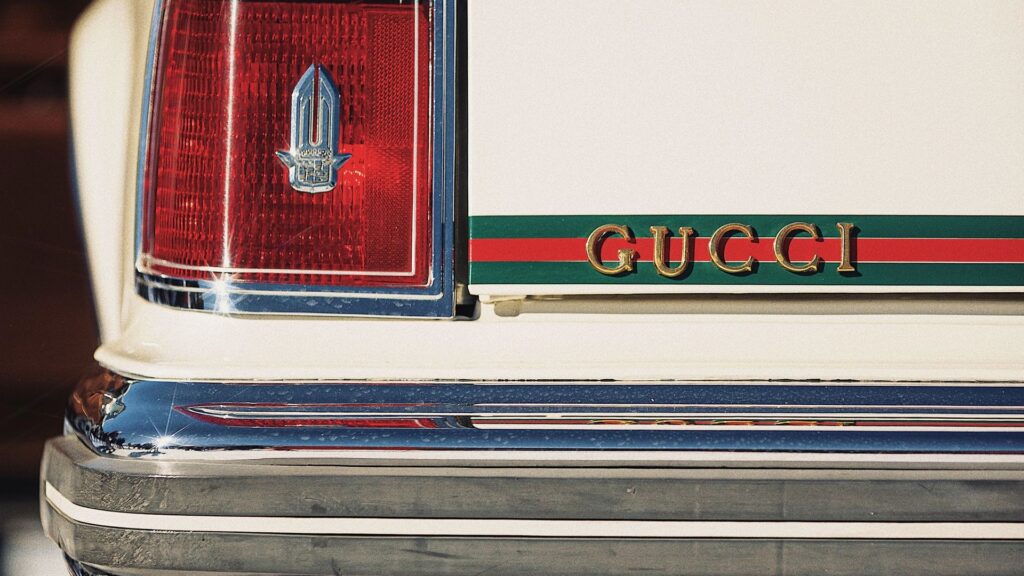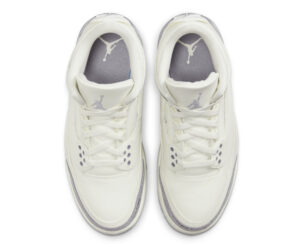
In the world of automotive history, certain vehicles stand out not just for their engineering, performance, or speed but for their ability to encapsulate a moment in time and serve as cultural icons. One such vehicle is the Cadillac Seville ‘Gucci Edition,’ a limited-edition collaboration between two titans of luxury—Cadillac, the quintessential American luxury car brand, and Gucci, the famed Italian fashion house known for its opulent designs and craftsmanship. Released between the late 1970s and early 1980s, the Seville ‘Gucci Edition’ was a statement of unparalleled extravagance, embodying both the excess and elegance of the era. This unique automobile was not just a car; it was a reflection of a cultural moment where fashion, luxury, and automotive design merged into one audacious symbol of status and style.
The Origins of a Cultural Collaboration
By the late 1970s, Cadillac had long cemented its reputation as a premier luxury car manufacturer, known for producing sleek, opulent vehicles that served as status symbols for the American elite. At the same time, Gucci was becoming synonymous with high-end fashion and extravagant tastes, having risen to international prominence with its distinctive designs and luxury products. It was in this context that the two brands came together for a collaboration that was as unexpected as it was brilliant.
Collaborations between car manufacturers and fashion brands were not common at the time, which makes the Cadillac Seville ‘Gucci Edition’ a true trailblazer. The partnership between the two brands was reflective of the era’s growing fascination with luxury, consumerism, and status symbols. In many ways, the Seville ‘Gucci Edition’ can be seen as a precursor to the kinds of cross-industry collaborations we see today between automotive brands and fashion houses, from the Bugatti x Hermès Chiron to the Mercedes-Benz x Virgil Abloh Project Maybach.
Design and Aesthetic: A Statement of Excess
What made the Cadillac Seville ‘Gucci Edition’ stand out was its unmistakable design, which incorporated Gucci’s iconic visual elements into the very fabric of the car. The Seville itself was already a stylish model in the Cadillac lineup, but the Gucci touch elevated it into an object of desire. The special edition featured a custom paint job in tones of beige, brown, and tan—colors that were synonymous with luxury during that era and still resonate with the Gucci brand’s aesthetic today. These earthy tones not only exuded class but also gave the car a timeless quality that distinguished it from other vehicles on the road.
The exterior of the car was further adorned with the iconic Gucci ‘GG’ logo, which appeared on the C-pillar, signaling to the world that this was no ordinary Seville. The attention to detail extended to the car’s interior, where the GG logo was embroidered onto the headrests, dashboard, and even the floor mats. Every inch of the vehicle was touched by the Gucci influence, from the trim on the seats to the steering wheel cover, creating a seamless integration of fashion into automotive design.
Perhaps one of the most luxurious touches was the inclusion of a custom set of Gucci luggage, designed to match the car’s color scheme and aesthetic. The luggage set was not just an accessory; it was an extension of the vehicle’s identity, a reminder that this car was meant for those who traveled in style, whether for business or leisure. This attention to coordinated luxury, where even the luggage was part of the driving experience, emphasized the complete immersion into the Gucci world that this car offered its owners.
Cultural and Historical Context
To fully appreciate the significance of the Cadillac Seville ‘Gucci Edition,’ one must consider the cultural and historical context of its release. The late 1970s and early 1980s were a period of conspicuous consumption, marked by the rise of consumer culture, a burgeoning luxury market, and an increasing desire for status symbols. This was the era of Studio 54, designer jeans, and luxury watches, where brands like Gucci became synonymous with wealth, power, and fame.
The partnership between Cadillac and Gucci capitalized on this cultural moment, offering consumers not just a car but a lifestyle. The Seville ‘Gucci Edition’ was marketed to a clientele who valued exclusivity and who saw the car as an extension of their personal brand. Driving this car was not just about transportation; it was about making a statement. In this sense, the Seville ‘Gucci Edition’ was a precursor to the luxury lifestyle vehicles we see today, where brands like Bentley, Rolls-Royce, and Lamborghini continue to create cars that are as much about image as they are about performance.
Limited Edition and Rarity
The Cadillac Seville ‘Gucci Edition’ was produced in extremely limited quantities, with only a few hundred units manufactured during its production run. This scarcity only added to the vehicle’s allure, as owning one became a symbol of not just wealth, but exclusivity. Over the years, the rarity of the Seville ‘Gucci Edition’ has turned it into a sought-after collector’s item, with vintage car enthusiasts and fashion aficionados alike vying to add this unique piece of automotive history to their collections.
Today, finding a well-preserved Seville ‘Gucci Edition’ can be a challenge, and when one does appear on the market, it often commands a high price. The car’s value has only increased with time, as its status as a cultural artifact continues to grow. Collectors appreciate the vehicle not just for its design and aesthetics, but for what it represents—a moment when two iconic brands came together to create something that transcended the ordinary.
The Legacy of the Cadillac Seville ‘Gucci Edition’
The Cadillac Seville ‘Gucci Edition’ was more than just a car; it was a pioneering collaboration that helped shape the future of luxury automotive design. In today’s world, collaborations between high-end car manufacturers and fashion houses are commonplace, but in the late 1970s, such a partnership was groundbreaking. The Seville ‘Gucci Edition’ paved the way for future collaborations, proving that fashion and automotive design could come together to create something truly unique.
The influence of this collaboration can be seen in more recent examples, such as the Lexus x Balmain or the Aston Martin x Tom Ford collaborations, where fashion and automotive design intersect to create vehicles that are as much about style as they are about performance. The legacy of the Seville ‘Gucci Edition’ is that it was one of the first cars to demonstrate that luxury could be a holistic experience, extending beyond the driving experience to encompass everything from the car’s aesthetic to its accessories.
While the Cadillac Seville ‘Gucci Edition’ may not be the fastest or most technologically advanced car in history, it remains one of the most stylish. Its unique combination of automotive craftsmanship and high fashion makes it a standout in the history of both industries. The Seville ‘Gucci Edition’ is a reminder that cars can be more than just modes of transportation—they can be expressions of art, culture, and identity.
Impression
The Cadillac Seville ‘Gucci Edition’ stands as a testament to the power of collaboration and the enduring appeal of luxury. Released at a time when conspicuous consumption and status symbols were at their peak, this limited-edition vehicle embodied the opulence and glamour of the late 1970s and early 1980s. With its distinctive Gucci-inspired design elements, from the iconic GG logo to the custom luggage set, the Seville ‘Gucci Edition’ was more than just a car—it was a symbol of exclusivity, style, and sophistication.
Today, the Seville ‘Gucci Edition’ continues to captivate collectors and car enthusiasts, not just for its rarity but for what it represents. It is a car that broke new ground in the automotive world, setting the stage for future collaborations between luxury car manufacturers and fashion houses. In the annals of automotive history, the Cadillac Seville ‘Gucci Edition’ will always hold a special place as one of the most stylish and culturally significant cars ever produced.
No comments yet.








